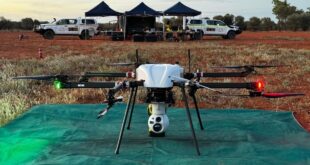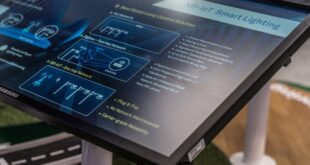Content Provided by
It’s a capacity crowd at the 2019 Super Bowl, and 80,000 football fans have gathered inside Atlanta’s Mercedes-Benz Stadium to watch the game. The weather is crystal-clear, so naturally the retractable roof is open. As the halftime show gets underway, a wave of excited chatter rolls through the crowd — a flock of a dozen drones has just dramatically dropped into the stadium, immediately above the headline musical act. Even though none of the early rumors about the halftime show included mentions of a drone element, no one is concerned. After that crazy drone display at the last Olympics, aerial shows like this one seem par for the course.
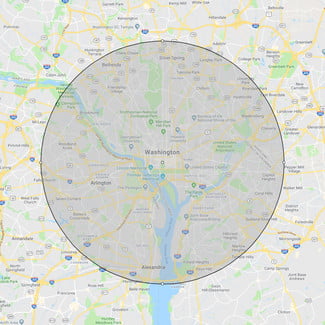
Sure enough, the drones begin what looks like a choreographed routine, each of the twelve drones heading out toward the seats in a perfect spoke-like pattern. The only hint that something isn’t going to plan is the fleeting yet visibly startled look on the lead singer’s face. But she’s a pro, and doesn’t miss a single beat.
A moment later, chaos. The drones, each equipped with a small but powerful explosive, have detonated within a few feet of the spectators below. Thousands now sit in their seats, unmoving, slouched over what’s left of the person next to them. Thousands more wander around, dazed, while those furthest from the blasts run, panicked, to the exits. Within a day, a known extremist group claims responsibility for the attack, the deadliest on U.S. soil since 9/11.
Real danger, or hype?
Let’s be clear. The scenario above isn’t the stuff of Hollywood spy movies any longer. Recently, DHS intelligence official, David Glawe, told CBS News that what concerns him the most is ”a weaponized drone threatening the Super Bowl or even the White House.” FBI director Christopher Wray, has also made it clear that drones represents a clear and present danger, telling Congress that, “given their retail availability, lack of verified identification requirement to procure, general ease of use, and prior use overseas, [drones] will be used to facilitate an attack in the United States against a vulnerable target, such as a mass gathering.”
The reality is, anyone with enough time, training, and the necessary bomb-making skills could orchestrate such an attack. Last month, Venezuelan president, Nicols Maduro made headlines by coming perilously close to being the first head of state harmed or killed by explosive-bearing drones, when he appeared before a large crowd in Caracas.
“In five minutes, you can program an off-the-shelf drone carrying 20 pounds to fly five miles to a destination, perform its activity, and be done,” Tim Bean, CEO at Fortem Technologies, told Digital Trends. Fortem sells drone detection and remediation products, including the DroneHunter: a drone designed to perform mid-air, disabling attacks on other drones.
In the future, will it be necessary to keep an eye on the sky, and ready to take cover at a moment’s notice from an imminent attack?
Companies, and professionals who work in the drone industry, perhaps not surprisingly, tend to downplay the risk presented by drone technology. China’s DJI is the world leader in civilian drones. In 2017 the company’s market share was estimated at 70 percent — miles ahead of its nearest competitor. “What happened in Venezuela raises concerns, and generates questions about what happens with drones,” Adam Lisberg, DJI’s corporate communication director for North America, told Digital Trends. Though it is believed that two DJI Matrice 600 drones were used in the attack on the Venezuelan president, Lisberg was quick to point out that the vast majority of drone use is safe, and suggested that people’s fear of drones will fade as these devices become more commonplace. “There’s a lot of hype because this is a new technology,” Lisberg said. “An awful lot of people, if they see a drone for the first time, they assume that it’s spying on them, or assume that it’s dangerous.”
Joshua Ziering, co-founder of commercial drone platform, Kittyhawk, agrees. “The Maduro incident certainly signifies a realization that there is the capability for bad actors to do bad things with drones,” he said. “However, I see a lot more hysteria than I do actual cause for concern.”
Preventing poor piloting
DJI sees poor piloting as the biggest cause for concern. “Most people using drones [recklessly], are probably careless, or clueless, not criminal,” Lisberg said. To address this issue, DJI has added a drone safety quiz to its mobile app, limiting beginner pilots to only the most rudimentary flight functions until they can show a sufficient level of knowledge. The app is also constantly updated with geo-fencing restrictions — information about local no-fly zones. Pilots receive warnings when they are flying near sensitive areas such as airports, and the software will actively prevent the drone from flying inside these zones.
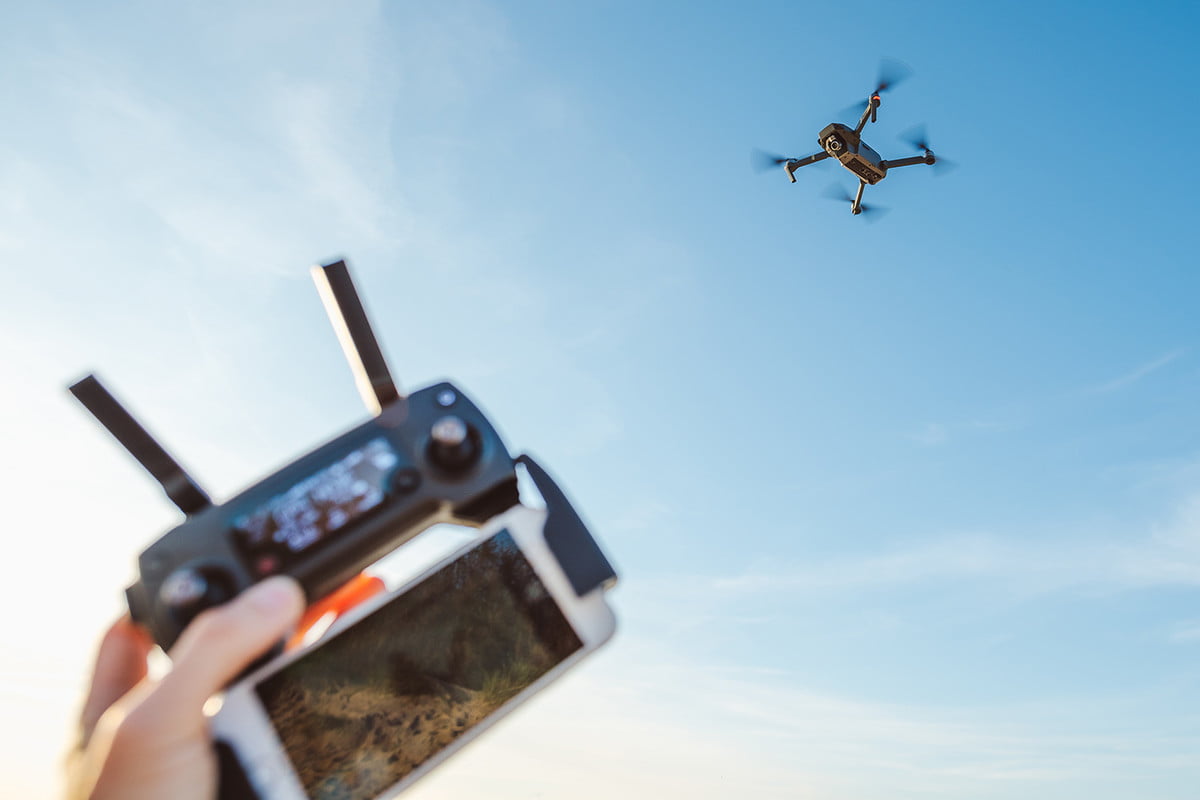
Ziering is also on-side with DJI’s belief that dangerous drone use is largely the result of ignorance, not malicious intent. “What really keeps me up at night is not the bad actors,” he said, “it’s the second group the ignorant actors who maybe don’t know the rules and don’t want to harm anybody, but because of their disregard for understanding how this all works, they have a very real chance of harming somebody. There’s far more of them than bad actors.”
It starts with detection
Whether it’s an ignorant pilot, or an individual or group intent on causing harm, all of the experts we spoke to agree: The first step is being able to spot a drone before it causes havoc. Step two is determining whether or not it poses a threat. The third and final step, is taking action to neutralize the threat.
Airborne drones fall into two categories: Those that are being actively piloted from a remote control, and those that are following a set of pre-programmed instructions.
Of all the drones in the air at any one time, most will fall into the first group. They’re remotely piloted, usually benign, and controlled by (hopefully) competent pilots. The drone industry, along with the FAA, which regulates drone use in the United States, is currently working out a framework that would give security forces and law enforcement the ability to differentiate these drones, from ones that might be possible threats. Known as “remote ID,” it’s like a license plate for drones, but instead of simply printing a physical ID on the drone itself, each drone broadcasts its ID.
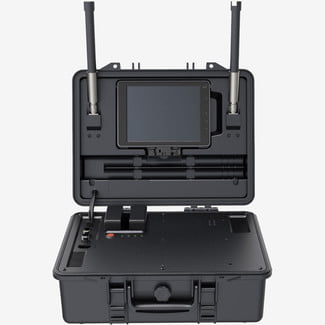
A year ago, DJI launched a remote identification system that represents the first attempt to establish this license plate concept. Aeroscope, as it’s called, automatically locates and monitors DJI drones flying anywhere within radio range. DJI claims that when equipped with an appropriate set of antennas, Aeroscope can detect the company’s drones up to 50 kilometers away, and can obtain info about these drones in as little as two seconds. Aeroscope can be ordered as a fixed installation, suitable for large, permanent zones like arenas, power plants, or airports, or as a briefcase-based mobile unit, for short term events like political rallies, or outdoor concerts.
It’s a powerful tool, but it’s not a panacea. The fatal flaw here is that Aeroscope only detects DJI-built drones. So how do we identify non-DJI drones? Unfortunately we don’t have a good system in place. While DJI is attempting to make its remote ID system an industry standard, its efforts have not been met with a lot of interest. “Other manufacturers don’t want to adopt that standard because they want their own standard,” Ziering said.
Eyes and ears
Even if Remote ID eventually becomes a standard, we’ll still need a way to detect drones that aren’t broadcasting it. In fact, these are almost certainly the drones we should be paying the most attention to. San Francisco-based DeDrone is one of a handful of companies that have created drone detection and surveillance products that are geared toward this task.
Using the same radio-frequency based techniques as DJI’s Aeroscope, combined with high-resolution video cameras, DeDrone’s DroneTracker platform can not only identify the location of a drone and its pilot, but it also takes an educated guess about the kind of drone it has found, which could help a security team determine the risk. A drone the size of a DJI Mavic Pro poses a far smaller threat than one the size of a FreeFly Alta 8, an octocopter that can carry a 20-pound payload. The goal, according to Pablo Estrada, DeDrone’s vice president of marketing, is to “make intelligent decisions about what’s happening in the airspace and display it to the user.” From there, it’s up to the security team to decide what their next steps should be.
Radio-frequency scanning on its own isn’t enough. Many drones can be set to follow a preset course using only GPS to guide them. “That’s called flying on the waypoint,” Bean said. “When you fly on a waypoint, the drone is not emitting any radio frequency — no RF, there’s no joystick, there’s nothing to jam, there’s nothing to intercept. It’s just listening to the GPS.” A drone flying on a waypoint represents a very credible threat. “These are called RF-dark drones,” Bean said, “and they are the tools of people with ill intent.”
Detecting these RF-dark drones requires radar. Trouble is, conventional radar, like the kind used at airports or military installations just isn’t designed for drone detection. “It’s topology challenged,” Bean said, “so it can’t see through a building, and it can’t see other side of a hill.” In a crowded, urban environment, this is a severe constraint. Conventional radar installations are big, expensive, and can emit a lot of energy, which poses a health risk. “If you stand in front of it, it will kill you.”
Fortem Technologies has created its own specialized radar module called TrueView, specifically for tracking drones. It’s small enough to be mounted on a drone, so it can even be used as an air-to-air tracker. It’s a low power system, and it’s also cheap enough that a facility like a stadium could install enough of them to give itself a 360-degree view of the surrounding airspace. “No one flies below our radar,” Bean said.
Downing a drone
Once a drone has been detected, and deemed a threat, it’s time to decide how to deal with it.
This is where things get dicey. Under the current FAA rules, even law enforcement personnel cannot legally shoot down a drone. “Shooting down a drone has the same consequences, legally and technically speaking, as bringing down an airliner or a Cessna,” Jeffery Antonelli, an expert in drone law, told Popular Mechanics.
A recent 1,200-page FAA Reauthorization Bill, however, is looking to change this, and would “give the Department of Homeland Security and FBI the right to track and down drones that they deem a ‘credible threat’ to a ‘covered facility or asset,’” according to NBC News.
Even if it eventually becomes legal for authorities to do so, perhaps the biggest reason not to shoot a drone with a gun, is it’s simply not that easy. Even trained snipers, under controlled conditions, struggle to hit a flying drone. In a densely-packed urban environment, a shot that misses a drone could easily become a shot that hits a bystander.
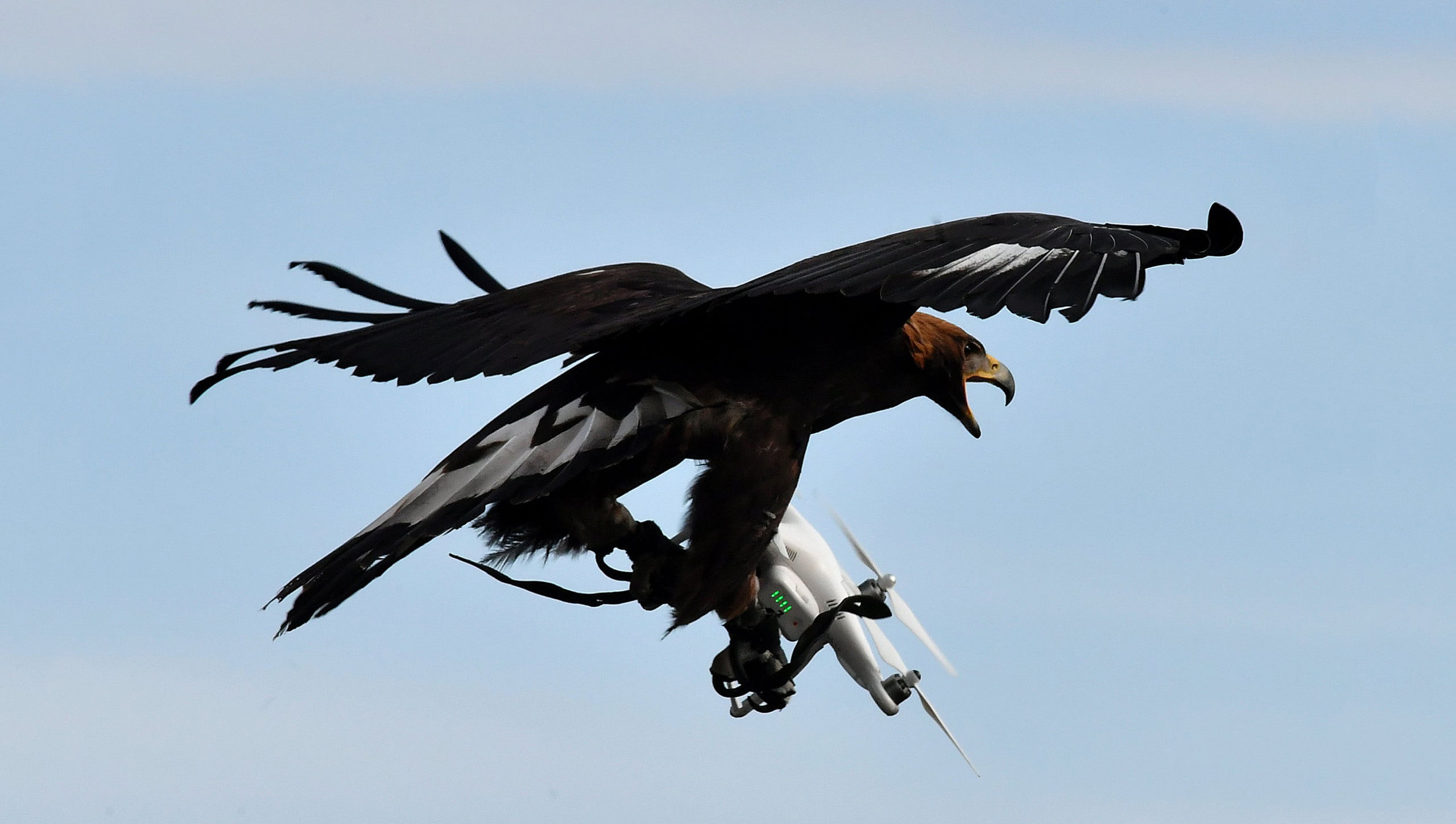
This has prompted companies to develop other forms of “kinetic” responses to unwanted drones. You may have seen videos of trained eagles grabbing drones out of the air, their sharp talons acting like grappling hooks on the drone’s landing gear. It’s a spectacular display of animal aerobatics, and when successful, the raptor drags the target drone to a safe location. Unfortunately they can’t always be relied on to do the job.
So-called “net guns,” like the SkyWall 100, are a non-lethal alternative to shotguns and rifles. These weapons fire cartridges at up to 100 MPH, which then expand into nets to envelope the target drone. Once tangled, the drone falls to the ground. The gun’s range is limited — usually no more than 100 meters — and is slow to reload. Additionally, because a netted drone will fall, it could be dangerous to use a net gun over crowds or other sensitive locations.
Another solution is to mount a net gun to a drone. Fortem’s DroneHunter, is an autonomous, radar-equipped drone, that is armed with a tethered net gun. It’s the airborne equivalent of “the good guy with a gun” defense. In the best case scenario, a DroneHunter captures its target, and tows it to a safe distance. This outcome is not guaranteed, The DroneHunter is limited to one shot per mission, making accuracy and precision critical to success.
A variation on this idea is Malou Tech’s Drone Interceptor MP200, a multi-rotor aircraft that drags a large net as it flies. The goal is to tangle a target drone in the net, but aerodynamic drag created by the net itself makes the MP200 much less maneuverable than its prey, and there’s always the risk that the net could be become caught on an object, downing the MP200 instead.
So are any of these kinetic responses reliable? Ziering has his doubts. “If you give me a drone,” he said, “I’m relatively sure that I could defeat most kinetic solutions very easily.”
Jammers and hackers
You don’t necessarily have to use physical force to eliminate a drone. Electronic countermeasures can be effective from a considerable distance, and they aren’t limited by quantity of ammunition. “Currently, the most effective technique is some type of a radio frequency jamming device,” Estrada said. It is suspected that such a device was used in Caracas to prevent those drones from reaching their target.
Unfortunately, jamming a venue the size of a stadium would invariably interfere with much more than just hostile drones. Were this kind of jamming to interfere with GPS or other aviation signals, it could be catastrophic.
It is possible, however, to aim a jamming signal at specific target. DeDrone is currently partnered with Battelle, the maker of the DroneDefender, a rifle-like electronic jammer that can disrupt a drone’s GPS reception, as well as the pilot’s remote control. Using the DroneDefender against a drone is almost like using a tractor beam from Star Trek, if Battelle’s YouTube videos are an accurate portrayal. They show soldiers safely forcing a drone to land, by maintaining a constant bead on the drone with a DroneDefender. Australian company DroneShield, makes a similar device, called the DroneGun. One of these devices was likely the “anti-drone” gun used on the set of Game of Thrones, to keep spies from taking photos of the HBO production.
Someone armed with the DroneDefender would need to be able to see their quarry, and be within 400 meters. Multiple, simultaneous targets would require multiple personnel armed with DroneDefenders, who could be deployed to an appropriate set of locations in time to intercept the drones before they reach their destinations. This makes it a last line of defense one that’s hard to use in darkness, or in any conditions that make visibility difficult.
In an ideal world, law enforcement would have the ability to take control of a threatening drone without the need to jam its communication. Adam Lisberg doubts that such a thing is possible, at least with DJI’s drones. “You can never rule out anything in the technological arms race,” he said, “but we’ve never heard of a situation in which someone could be able to truly take control [of our drones]. Our drones are designed to be controlled only by the person who’s holding the controller.”
Nonetheless, this kind of remote-commandeering is exactly what a company called Department 13 claims it can do. Its “Mesmer” technology can listen for, and take control of, any drone within range of its antennas. “By adapting to the protocol used to control a drone,” the company’s website says, “Mesmer inserts messages that tell the drone to exit a restricted airspace, return home, or land in a predetermined safe zone.” Department 13 says Mesmer can also scale up, to address multi-drone swarms. Italian company Finmeccanica, claims its Falcon Shield system can do the same thing. It sounds like an excellent solution, albeit one with a potentially frightening down-side should the technology ever fall into the hands of the people we’re trying to defend against. The other problem with Mesmer is that it’s not effective against RF-dark drones. With no remote control signals sent to these drones, there’s nothing for Mesmer to hear or adapt to.
Flying in the face of danger
Both DeDrone and Fortem claim that their respective technologies have proven successful in the field, but neither company was willing to provide concrete proof. Estrada points out that his company has been used to protect against drone threats two years in a row at the annual World Economic Forum in Davos, Switzerland. When we asked if DeDrone had managed to detect and help neutralize a drone threat at the conference, Estrada declined to comment.
Tim Bean was similarly coy about Fortem’s results. He claimed he didn’t have the rights to tell us about his clients, or to quote their experiences. “It is deployed, it is working, it is doing what it’s designed to do,” he said.
The technology to detect, classify, and neutralize nefarious drones exists. It’s already being used to secure sensitive installations, like power plants, large sporting and entertainment venues, airports, and government buildings. High-profile events, like presidential inaugurations, royal weddings, or even the Olympics will also benefit from a heightened airspace awareness and ready countermeasures.
There’s even some hope that we’ll be able to monitor larger areas too. DeDrone and AT&T recently partnered to extend drone surveillance over areas the size of a city, but reliably protecting a busy city intersection, a school playground, or even a busy mall parking lot from a random drone attack will likely prove difficult.
In the end, we may simply have to accept a world in which we add the threat of a dangerous drone to an already worrisome list that includes mass shooters with large capacity magazines, bombs, and people who are willing to use vehicles as weapons.
For now, we’ll have to rely on lawmakers to ensure that our legal frameworks find the right balance between protecting the incredible opportunities and innovations that the drone industry is creating, and protecting the lives that will hang in the balance when this technology is inevitably used to cause harm. Let’s hope that’s not a flight of fancy.
 helps readers keep tabs on the fast-paced world of tech with all the latest news, fun product reviews, insightful editorials, and one-of-a-kind sneak peeks.
helps readers keep tabs on the fast-paced world of tech with all the latest news, fun product reviews, insightful editorials, and one-of-a-kind sneak peeks.
 Unmanned Aerial Vehicle The latest drone news
Unmanned Aerial Vehicle The latest drone news
